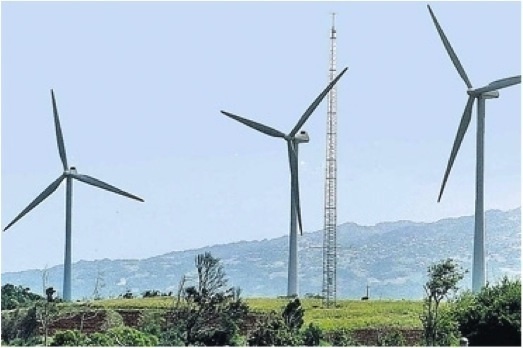Above: Jamaica’s Wigton Wind Farm
By the Caribbean Journal staff
By 2030, Jamaica could be on its way to achieving a reduction in the country’s dependence on imported fossil fuels.
The country spends billions each year to import crude oil, which is processed by Jamaica’s state oil refinery, PETROJAM — in 2010, it spent $1.6 billion importing 20 million barrels of oil.
The government’s National Energy Policy sets out a plan to diversify the country’s energy base, with the goal of reducing fossil fuel dependence by 20 percent by 2030.
Part of the strategy is to introduce Liquified Natural Gas to meet at least 42 percent of the country’s energy needs by 2030, something the bauxite/alumina sector supports, as it would significantly drive down their production costs.
According to Energy Minister Clive Mullings, green energy is also being considered, with a plan to have renewable energy meet 20 percent of the country’s energy demand in 20 years or less.
“There really is no silver bullet, these things take resources, and it takes focus,” he said. “It’s also important for government to do the right thing.”
Mullings said the government had lifted the cap on green energy from 15 Megawatts to 25 Megawatts.
The country’s Wigton Wind Farm in Manchester has produced enough energy to reduce about 27,000 barrels of oil demand, and hydro energy from Jamaica’s rivers and water sources has contributed 24 Megawatts of electricity to the grid.
Last month, Jamaica signed a deal with a United States-based solar firm, Green RG Management, that will test its solar technology in Jamaica, beginning with a plan to retrofit government buildings with LED lights and solar equipment.
The Inter-American Development Bank recently loaned Jamaica $90 million for energy efficiency projects.
